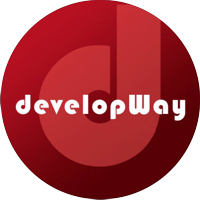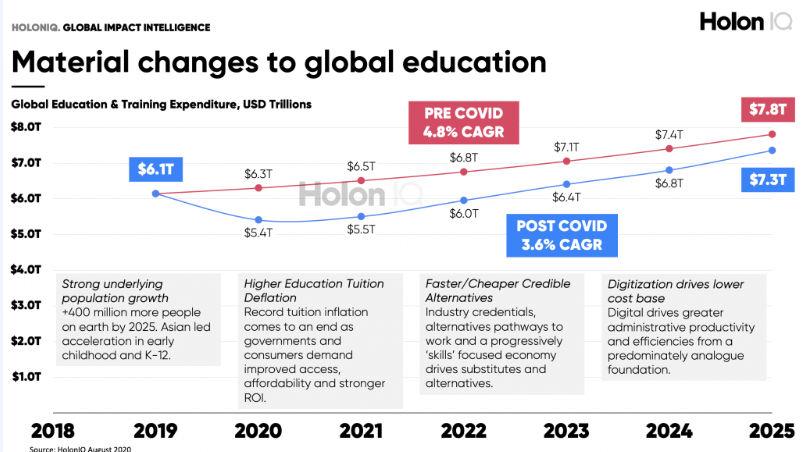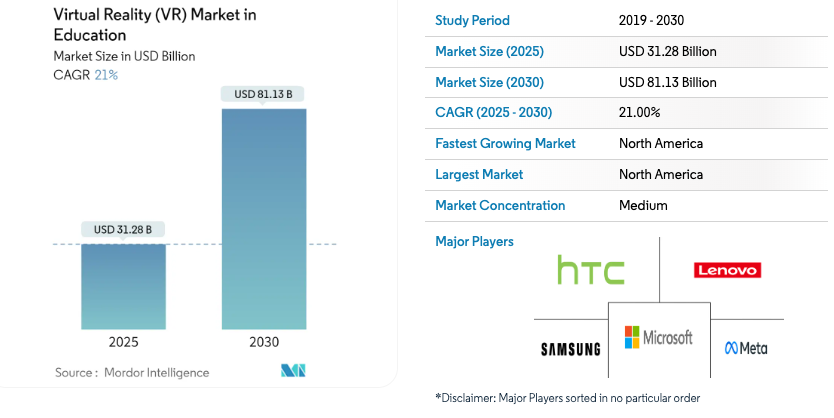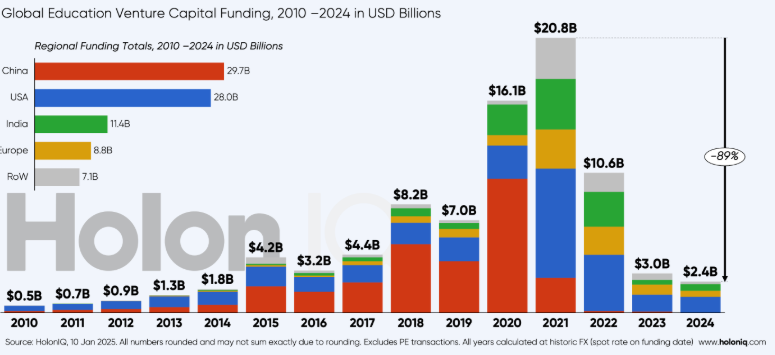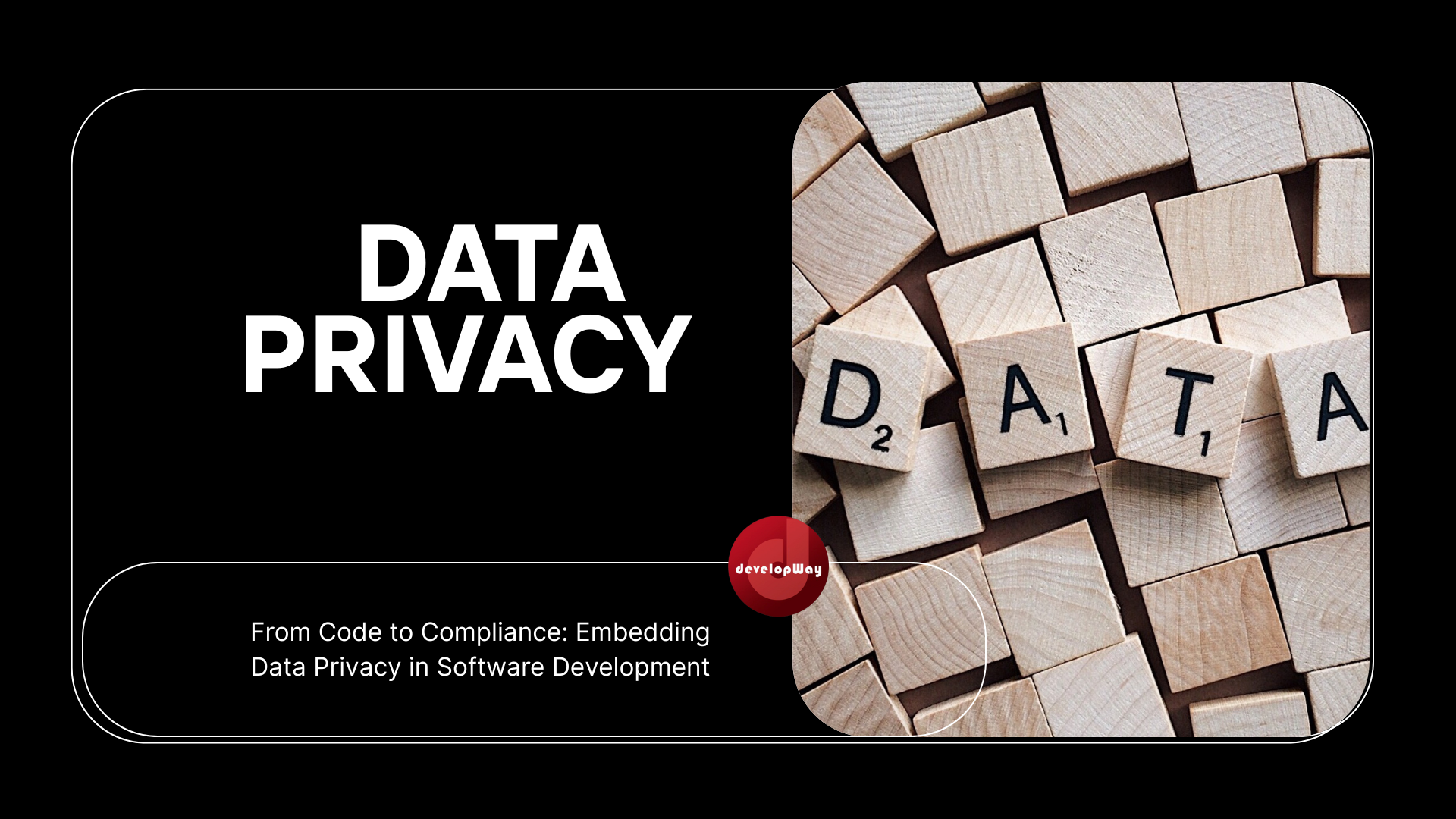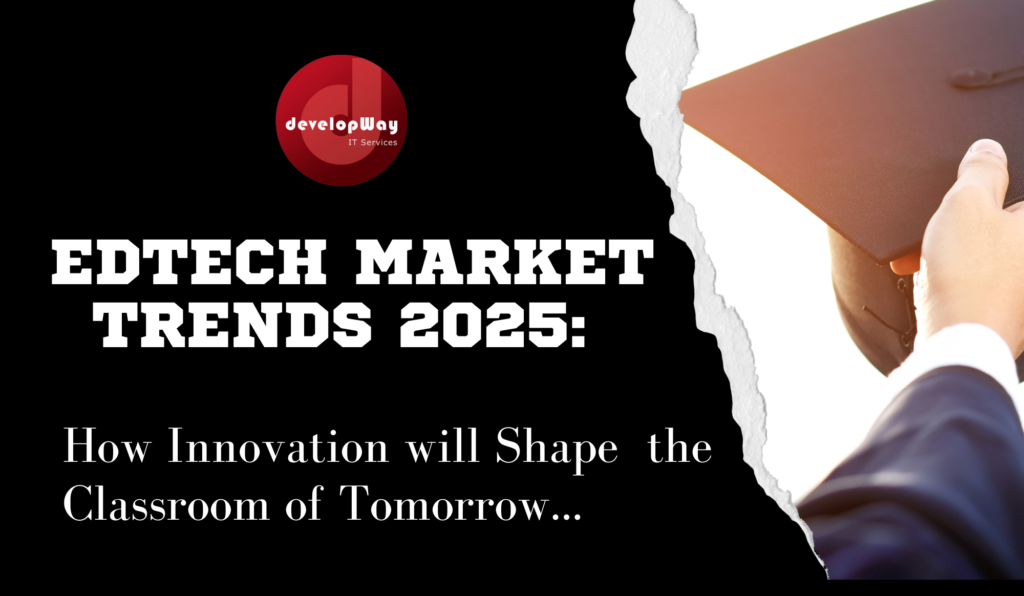
EdTech Market Size and EdTech Industry Growth at a Glance
Global EdTech spending is on track to exceed USD 404 billion by 2025, expanding at a CAGR of roughly 16 percent from 2019 to 2025. This surge is propelled by ubiquitous connectivity, a swelling pool of digital-native learners, and aggressive public-private investment in next-generation teaching tools. For decision-makers, the size of the prize underscores the urgency to embed technology-driven learning pathways before digital disruptors capture the opportunity.
Trend 1 — AI-Powered Personalized Learning Takes Center Stage
Artificial intelligence is shifting from novelty to necessity. The AI-in-education market, valued at USD 5.88 billion in 2024, is projected to soar to USD 32.27 billion by 2030 (31 percent CAGR). These algorithms mine behavioural data in real time, delivering micro-level interventions—adaptive quizzes, voice-activated tutoring, predictive feedback—that recalibrate instruction to each learner’s cognitive fingerprint. Institutions deploying such systems not only raise attainment but also generate high-resolution analytics that sharpen curriculum design.

From Data-Driven Insights to Adaptive Learning Tools That Scale
AI engines ingest learner telemetry—engagement heatmaps, error patterns, pacing variances—and instantaneously fine-tune lesson difficulty, modality, even tone of voice. This closed feedback loop scales elegantly across thousands of students, transforming differentiation from a labour-intensive ideal into a default instructional setting.
Trend 2 — Immersive Learning and Smart Classroom Innovations Redefine Engagement
Immersive media now moves beyond pilot programs. The VR-in-Education market alone is expected to reach USD 31.28 billion in 2025 before racing toward USD 81 billion by 2030. mordorintelligence.com From dissecting virtual frogs to rehearsing complex surgical procedures, VR/AR experiences plant learners inside the concept, converting passive absorption into embodied mastery.
VR/AR Labs, Gamified Education Strategies, and Student Engagement Platforms
Campus makerspaces are morphing into mixed-reality labs where learners co-create 3-D simulations, while gamified dashboards award micro-credentials in real time. Engagement platforms stitch these experiences together, surfacing granular motivation metrics that instructors can deploy to keep cohorts on track.
Trend 3 — Blended Learning Models Accelerate Mobile Learning Adoption
Hybrid delivery has matured into a strategic imperative. The mobile-learning segment is forecast to hit USD 110.42 billion in 2025, on its way to more than tripling by 2029. With lessons optimized for small-screen interactivity and offline caching, education becomes asynchronous, location-agnostic, and relentlessly learner-centric.
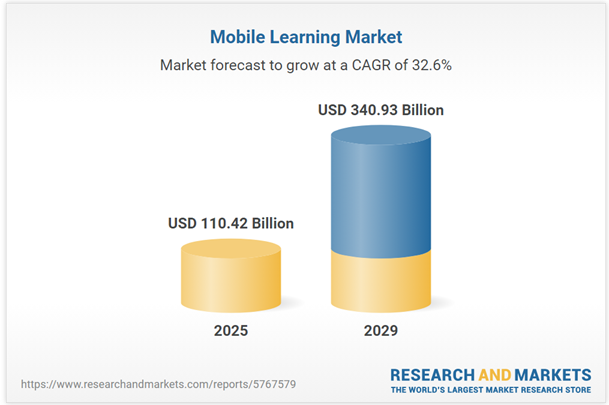
Where the Future of Online Education Meets the On-Campus Experience
Institutions are synchronizing LMS notifications with beacon-enabled classrooms, ensuring that a quiz started on a commuter train can resume seamlessly in a seminar hall. The result: frictionless continuity that honours both the agility of online modules and the social capital of in-person debate.
Trend 4 — Learning Analytics Evolution and Data Privacy in 2025
Predictive dashboards now surface at-risk students weeks before traditional assessments would flag trouble. Yet, the sophistication of these analytics magnifies the compliance stakes—GDPR, COPPA, and a cascade of regional privacy acts require encryption-first architectures and auditable AI pipelines.
Making Learning Management Systems Truly AI-Driven
Next-gen LMS platforms embed deep-learning models that auto-generate personalised study plans while cryptographically hashing sensitive performance data. Institutions that master this balance of insight and integrity will command a durable trust premium.
Trend 5 — Education SaaS Platforms Dominate the EdTech Industry Trends
Subscription-based ecosystems are democratising enterprise-grade capability for SMBs. Modular APIs allow schools to cherry-pick best-of-breed tools—assessment engines, content libraries, proctoring suites—and stitch them into a unified learning stack without monolithic vendor lock-in.
Subscription Economies and Seamless Integrations for SMBs and Enterprises
By 2026, SaaS deployments are projected to account for more than 60 percent of global EdTech spend, compressing roll-out timelines and freeing IT teams to focus on instructional innovation rather than infrastructure maintenance.
Trend 6 — Rising Demand for Classroom Technology Upgrades in Emerging Markets
Sub-Saharan Africa, South Asia, and parts of Latin America are earmarking record capital for digital classrooms—smart boards, solar-powered tablets, satellite-backed connectivity—to leapfrog legacy infrastructure and close learning gaps.
Government Policies and Funding Catalyze EdTech Market Trends 2025
Public procurement frameworks now bundle hardware with teacher-training SaaS licences, ensuring that adoption outpaces obsolescence. Vendors attuned to local language interfaces and low-bandwidth optimisation will capture outsized share.
Funding Spotlight: How Investors Are Betting on EdTech Market Trends 2025
Investor sentiment has recalibrated after the pandemic surge. EdTech venture funding contracted to roughly USD 2.4 billion in 2024—the lowest level in a decade—yet M&A volume topped 300 deals, signalling disciplined but sustained market confidence. holoniq.com Strategic buyers are consolidating niche innovators to build end-to-end learning platforms, while growth-stage startups pivot toward profitability and durable revenue models.
Valuations, M&A Activity, and Strategic Partnerships to Watch
Beneath the headline slowdown, valuations for AI-driven tutoring, credential-verification, and immersive-content studios remain robust, reflecting investors’ conviction that the next wave of educational transformation sits at the intersection of machine learning and experiential design.
Action Plan for Decision-Makers: Leveraging EdTech Market Trends 2025 for Competitive Advantage
Audit Tech Stack Alignment: Map current capabilities against the six macro-trends; prioritise gaps that impede personalised or immersive delivery.
Outsource for Agility: Engage specialised development partners to accelerate AI, mobile, and VR pilots without over-extending internal teams.
Upskill Talent: Institute continuous professional development to ensure faculty and IT staff can exploit data analytics and SaaS integrations.
Embed Privacy by Design: Adopt zero-trust security and transparent data-governance frameworks to future-proof compliance.
Pilot, Measure, Scale: Launch small-scale proofs of concept, track engagement and attainment KPIs, then scale successes institution-wide.
Conclusion: Embracing Innovation to Shape the Classroom of Tomorrow
The numbers are compelling; the technologies are proven. Institutions that weave AI personalisation, immersive media, and data-rich analytics into their pedagogical DNA will not merely keep pace—they will define the next standard of educational excellence. The classroom of 2025 is not a destination; it is a dynamic continuum where innovation, inclusivity, and insight converge to unlock every learner’s potential.
Partner with DevelopWay’s EdTech Engineering Team Today!!!
